In 2025, the U.S. labor market remains tight and resilient, creating a complex hiring backdrop for the Construction, Engineering, and IT sectors. Executive decision-makers must align recruitment efforts with market realities, using data-driven strategies and proactive planning to secure top talent.
Recent labor statistics paint a picture of modest unemployment and ongoing job growth. In June 2025, non-farm payrolls increased by 147,000, and the unemployment rate held at 4.1 %. This stability signals employer caution around layoffs amid economic uncertainty, even as sectors like construction added 15,000 jobs that month.
Emerging Trends Transforming the Talent Landscape
Industry growth fuels demand:
- Construction output surpassed $2 trillion in 2024, with employment exceeding 8.3 million workers, surpassing the previous peak from 2006.
- Engineering roles, particularly civil, structural, and MEP, saw a 6.2 % year-over-year salary gain in early 2025, with licensed professionals commanding a 10–15 % premium.
Labor shortages intensify:
- Firms are projected to need 454,000 additional construction workers in 2025 to meet demand, closing the gap between openings and available skilled labor.
- Projected employment growth in construction from 2023 to 2033 is 4.7 %, exceeding average growth across all industries.
Tech sector remains competitive:
- IT and software unemployment hovers around 3.3 %, while architecture and engineering unemployment is about 2.0 %.
- Despite concerns over AI, AI-specific roles remain a small share of overall postings—only 0.2%—though demand is accelerating.
Gen Z trends and labor pipeline changes:
- Many younger workers are opting into trade professions such as construction and skilled trades, drawn by stable pay and less automation risk. Trade school enrollments rose nearly 20% between 2019 and 2024.
- Policy shifts around immigration enforcement are tightening the labor pool—especially in construction, where an estimated 200,000 to 400,000 roles may go unfilled.
What This Means for Talent Acquisition
Organizations in these industries face a perfect storm of high demand, limited supply, and rising wage pressures. The average hourly earnings increased 3.7% year-over-year in June 2025, though real wage growth remains modest.
Candidates in skilled roles demand better fit, faster hiring processes, and clear career pathways. Employers report fewer applicants with hands-on project experience or relevant soft skills, which extends the time-to-fill and heightens rejection rates.
To compete successfully:
- Expand candidate pipelines beyond active seekers.
- Leverage recruitment technologies to move quickly and accurately.
- Align talent acquisition strategy with infrastructure cycles, project timelines, and emerging tech needs.
Strategic Insight: Talent Strategy You Can Build On
Bridging data and execution can help executives convert uncertainty into opportunity:
- Use real-time labor insights to forecast hiring needs tied to federal investment projects or major IT rollouts.
- Balance pay competitiveness with predictive hiring models that anticipate economic or regulatory trends.
- Prioritize strategic relationships with talent partners that offer embedded resourcing solutions.
Key Trends Recap
- Strong labor demand: Sustained investment is driving high hiring volumes in construction, engineering, and tech.
- Skills shortages: Retirement, immigration restrictions, and evolving skill needs constrain talent availability.
- Wage pressure: Salary increases outpace inflation in many technical and engineering roles.
- Technology’s growing role: AI and automation tools are changing how hiring needs are defined and met.
Conclusion & Call to Action
To navigate 2025 effectively, organizations must integrate talent strategy into broader operational planning, anticipating workforce needs, leveraging market data, and shaping recruiter partnerships accordingly.
At Westbrook Project Solutions, we help companies in Construction, Engineering, and IT translate labor market realities into strategic hiring success. We combine fractional leadership, embedded talent teams, and deep industry insight to help clients stay ahead in tight markets.
To learn more about aligning your talent strategy with evolving labor dynamics, contact us at Westbrook Project Solutions. We’ll help you build a proactive, data-driven talent advantage.

